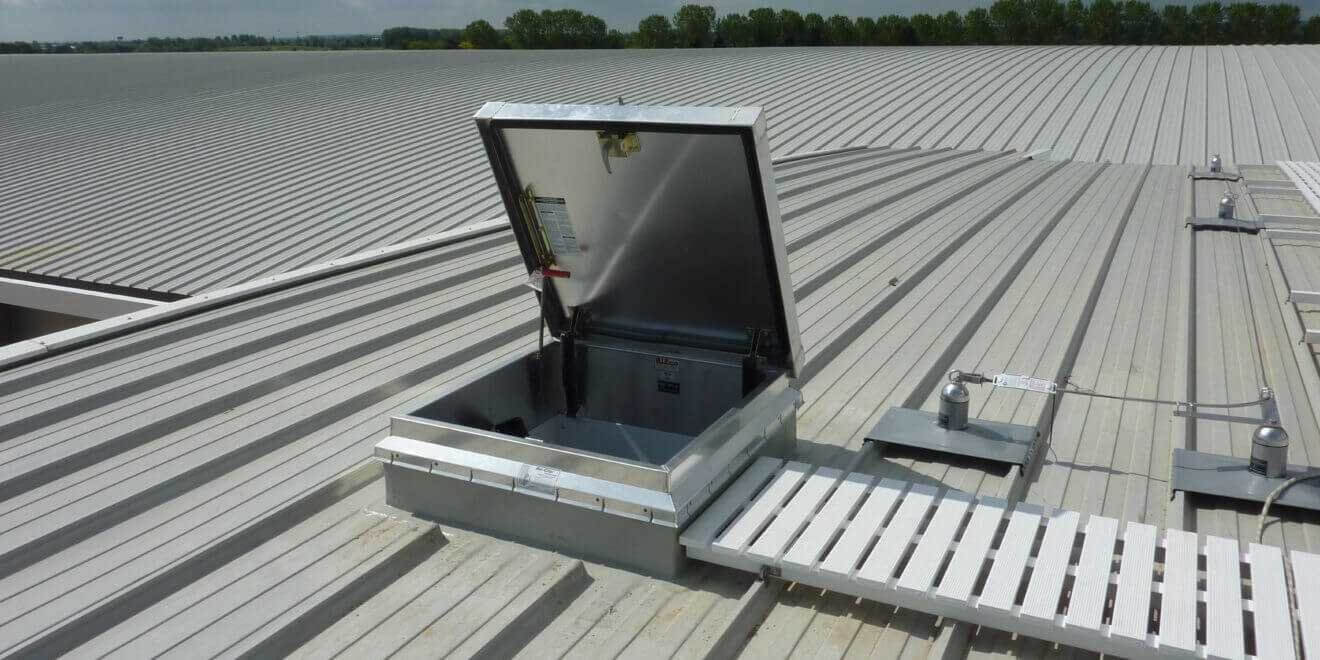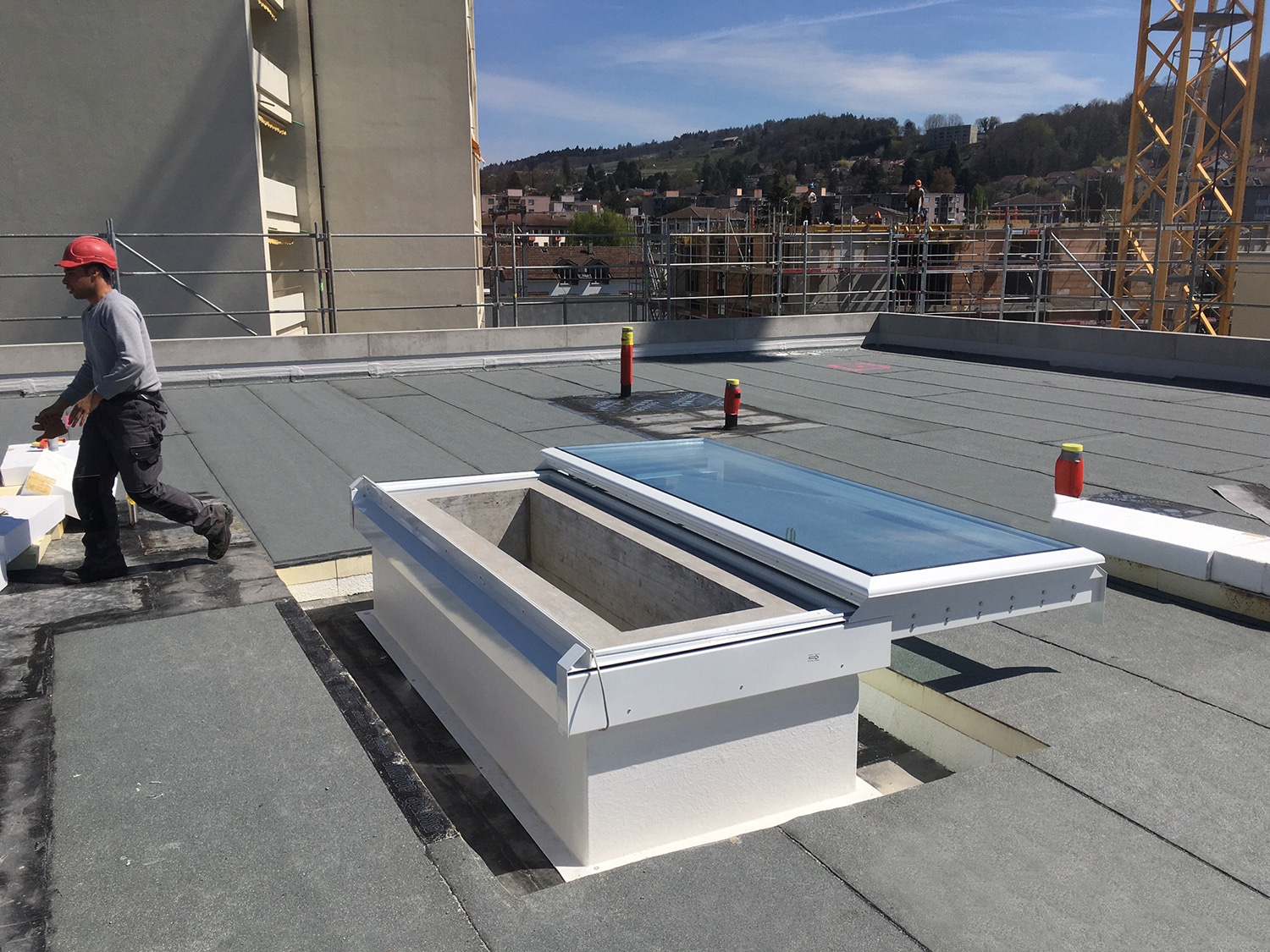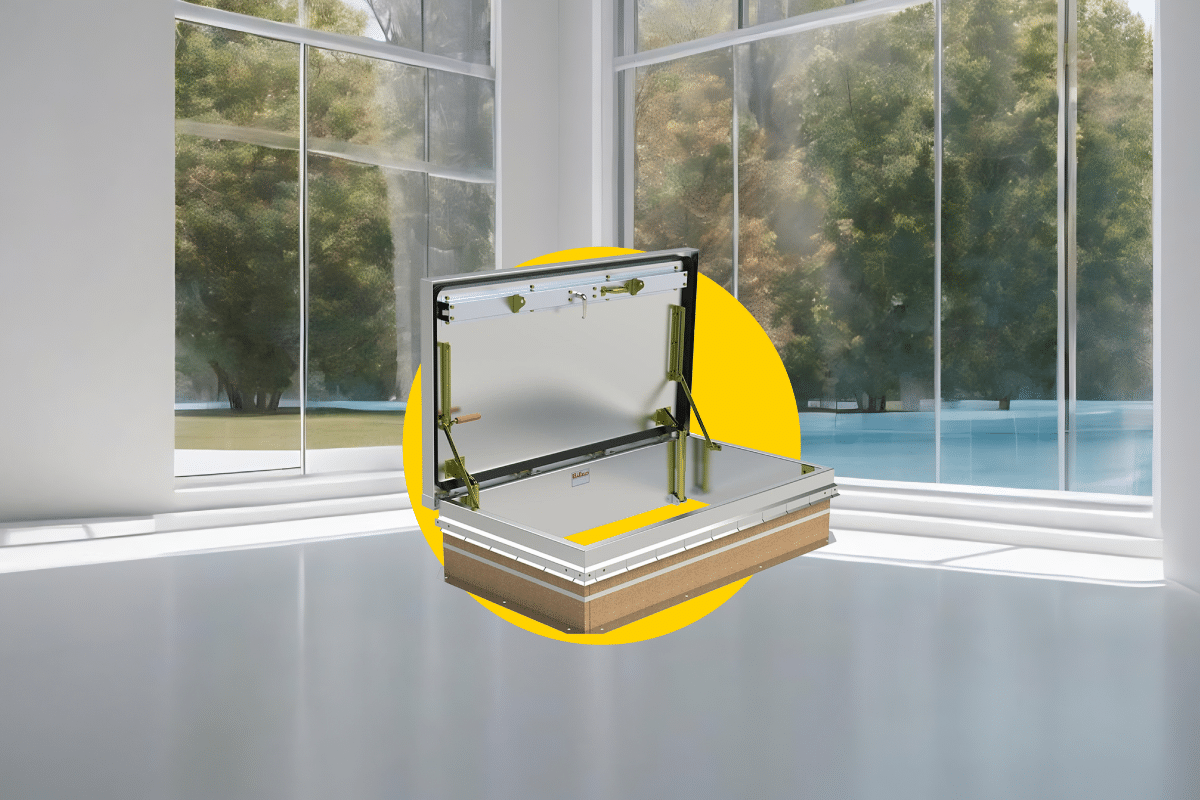Weather-resistant interiors are airtight, reducing moisture infiltration for comfort and energy efficiency. However, these designs can create challenges in moisture management, as even minor leaks can lead to mold growth, insulation damage, and deterioration of building materials.
A carefully selected and installed roof hatch is essential for keeping the building envelope’s integrity. A poorly sealed or damaged hatch can allow water infiltration, compromising weather resistance. High winds and salt spray heighten the risk of water damage in coastal areas, while regions with heavy rainfall need durable hatches to prevent leaks.
Investing in a high-quality, waterproof roof hatch is essential for a comprehensive waterproofing strategy. A well-sealed roof hatch protects against water damage, ensures a healthy indoor environment, and enhances the durability of your weather-resistant design.
Types of Roof Hatches
Let’s explore the several types of roof hatches available. Every variety has distinct characteristics that address requirements, especially resistance to weather conditions.
Domed Roof Hatches
Domed roof hatches have an aerodynamic shape that reduces wind resistance, making them ideal for coastal and windy regions. Their curved design also improves water shedding, directing rain away and minimizing leak risks, which is helpful in areas with heavy rainfall.
These domed roof hatches have a range of common applications. In residential homes, they serve as access points to attics or offer an emergency egress choice. In commercial buildings, they are instrumental in accessing rooftop HVAC units, solar panels, and various other equipment, ensuring efficient maintenance and operation.
Electrically Actuated Roof Hatches
Electrically actuated roof hatches offer easy access, making them ideal for heavy or often accessed roofs. They reduce physical strain on users, especially in areas with heavy snowfall, where manual snow removal is difficult. Additionally, these hatches enhance safety by minimizing the risk of injuries from manual lifting in poor weather.
They are well-suited for industrial facilities, particularly in environments where heavy equipment or materials must be transported to the rooftop.
Miami-Dade Approved Roof Hatches
Living in hurricane-prone Miami-Dade County needs structures built to withstand severe weather. The stringent building codes ensure roofs, including those with Miami-Dade approval, are tested for hurricane-force winds and heavy rainfall. This certification gives residents peace of mind, knowing their homes are ready for extreme weather conditions.
Installation and Maintenance of Roof Hatches

Installation and Maintenance
Like any important building component, proper installation and regular maintenance are necessary for your roof hatch to function effectively and provide long-term protection, especially in weather-resistant interiors.
Proper Installation
Proper roof hatch installation is vital for preventing leaks and ensuring weather resistance. A qualified roofing contractor should ensure the hatch is properly flashed, sealed, and secured.
Flashing should be applied in overlapping layers using aluminum, copper, or rubber to create a watertight barrier. High-quality roofing-specific sealants that resist UV rays, extreme temperatures, and moisture are essential. Before starting the application, ensure surfaces are completely dry and dirt-free.
The curb height around the hatch is important for drainage, and self-draining curbs help prevent water pooling. Properly securing the hatch also ensures it can withstand wind loads and keep its waterproof integrity, enhancing its longevity against the elements.
Regular Maintenance
Regular maintenance is essential for any roof hatch to perform well in various weather conditions. Conduct routine visual inspections to check for wear, damage, or leaks, paying close attention to cracks, corrosion, and loose fasteners.
Maintain the hatch’s cleanliness to lessen debris and apply lubrication to the moving components according to the manufacturer’s guidelines. For complex issues, consult a qualified roofing contractor for repairs like re-flashing or re-sealing. Following these steps ensures the roof hatch stays effective and protected.
Material Considerations
When designing weather-resistant interiors, selecting materials that can withstand corrosion, and the effect of weathering is vital. One excellent choice is aluminum, which is typically corrosion resistant. Due to its enhanced durability, marine-grade aluminum is recommended for areas near the coast or in environments with elevated levels of corrosion.
Galvanized steel is an excellent choice, but the coating must be thick and intact for effective corrosion protection. Fiberglass, especially when reinforced with corrosion-resistant materials, is also strong and durable. Choosing these materials carefully helps ensure interiors withstand weather and corrosion challenges.
Choosing the Right Roof Hatch for Your Needs

Now that you better understand the distinct types of roof hatches and the key considerations, it’s time to make an informed decision.
Assess Your Specific Needs
When selecting a roof hatch, consider your building type and access frequency. Basic hatches are suitable for occasional use, while electric ones are better for regular access. Keep local climate and durability in mind, especially for Miami-Dade-approved options. Prioritize safety features and set up a realistic budget for purchase and installation. Take your time to evaluate your options carefully. This will help you choose the best one.
Consult With Professionals
Consulting roofing contractors is important since they have materials and local code expertise. Involving architects or engineers during new buildings or renovations also helps select the best options. Expert guidance leads to better roofing outcomes.
Get Multiple Quotes and Compare Options
Once you’ve gathered professional information, get quotes from reputable roofing contractors or suppliers. Compare prices, warranties, and the value offered by each option.
Conclusion
Choosing the right roof hatch may seem minor, but it affects your building’s health and safety. Correct installation and routine upkeep are also important for achieving peak performance. Assess your needs, including building type, access frequency, and local climate, to make an informed decision.
By weighing these factors, you can select a roof hatch that ensures reliable access, durability, and building value.

